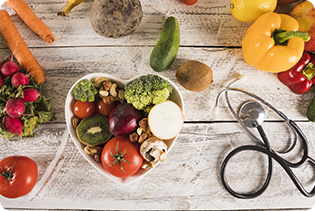In the realm of culinary exploration, hygiene is the silent but indispensable partner. Whether you are a seasoned chef or an amateur enthusiast, the importance of maintaining impeccable hygiene during food preparation cannot be overstated. In this insightful exploration, we delve into crucial hygiene hacks that may be overlooked in your food preparation routine. At “The Most Generous Soul,” our commitment to sharing knowledge extends beyond the culinary delights we create, touching upon fundamental aspects like hygiene to ensure that your food journey is not only flavorful but also safe and health-conscious.
The Importance of Hygiene in Food Preparation
Before we embark on uncovering the hygiene hacks, let’s take a moment to reflect on why hygiene is paramount in the realm of food preparation. Ensuring that the food we consume is prepared in a clean and sanitary environment is the first line of defense against foodborne illnesses. Cross-contamination, bacterial growth, and improper handling can all compromise the safety and quality of the food we enjoy.
A Holistic Approach to Well-being
At “The Most Generous Soul,” we view hygiene as an integral part of our holistic approach to well-being. It aligns with our philosophy of not just providing delicious treats but also fostering an environment where culinary enjoyment is coupled with health consciousness. Now, let’s delve into the hygiene hacks that can elevate your food preparation practices.
Crucial Hygiene Hacks You Might Be Missing
Hand Hygiene Matters
The hands are the most direct link between you and the food you prepare. Washing your hands thoroughly before and after handling food is a basic yet crucial step that is often overlooked. Use soap and warm water, and scrub for at least 20 seconds. Pay attention to the spaces between your fingers and under your nails.
The Forgotten Cutting Board Cleanse
Cutting boards, especially those used for raw meat, can harbor harmful bacteria if not cleaned properly. Consider using separate cutting boards for raw meat, vegetables, and cooked foods to minimize the risk of cross-contamination. Clean and sanitize cutting boards after each use, and don’t forget the often-neglected wooden cutting boards.
Mindful Towel Usage
Kitchen towels are convenient but can become breeding grounds for bacteria if not used mindfully. Ensure that you change kitchen towels regularly, especially if they come in contact with raw meats. Wash them in hot water with bleach to eliminate any lingering bacteria.
Utensil Vigilance
Utensils, especially those with crevices or moving parts, can hide remnants of past meals. Take the time to dismantle and thoroughly clean kitchen gadgets, blenders, and food processors. Pay attention to the nooks and crannies where food particles can hide.
The Refrigerator Cleanse
Your refrigerator is not just a storage space; it’s a critical element in maintaining the freshness and safety of your ingredients. Regularly clean and sanitize your refrigerator, paying special attention to shelves and drawers where spills and drips can occur. Check expiration dates and discard any items past their prime.
Dishcloth Diligence
Dishcloths are often overlooked when it comes to hygiene. These seemingly innocuous items can become breeding grounds for bacteria if not cleaned regularly. Launder dishcloths in hot water and replace them frequently to maintain a hygienic kitchen environment.
Safe Seafood Handling
Seafood requires extra attention due to its perishable nature. When handling seafood, ensure that it is fresh and stored at the right temperature. Use separate cutting boards and utensils for seafood to prevent cross-contamination. Immediately clean surfaces that come in contact with raw seafood.
Proper Waste Management
Effective waste management is a cornerstone of kitchen hygiene. Dispose of food scraps promptly and seal garbage bags securely. Regularly clean and disinfect the trash can and surrounding areas to prevent the spread of bacteria and odors.
The Art of Hand Sanitizing
While handwashing is crucial, hand sanitizing adds an extra layer of protection, especially when dealing with raw meats or potential contaminants. Keep a hand sanitizer with at least 60% alcohol content in your kitchen for convenient use.
Mastering Cross-Contamination
Cross-contamination can occur when bacteria from one food item transfer to another. Be vigilant about using separate cutting boards, knives, and utensils for different food categories. Consider color-coding your equipment to make it easy to differentiate.
Conclusion: Elevating Your Culinary Journey with Hygiene
In concluding this exploration of hygiene hacks, consider incorporating these practices into your food preparation routine. As you embark on your culinary journey, let hygiene be the silent but steadfast companion, ensuring that every dish you create is not only delicious but also safe and health-conscious.
For more insightful content on the intersection of food, philosophy, and hygiene. We believe that true culinary enjoyment goes hand in hand with mindful practices, creating a space where flavor, well-being, and consciousness converge.

